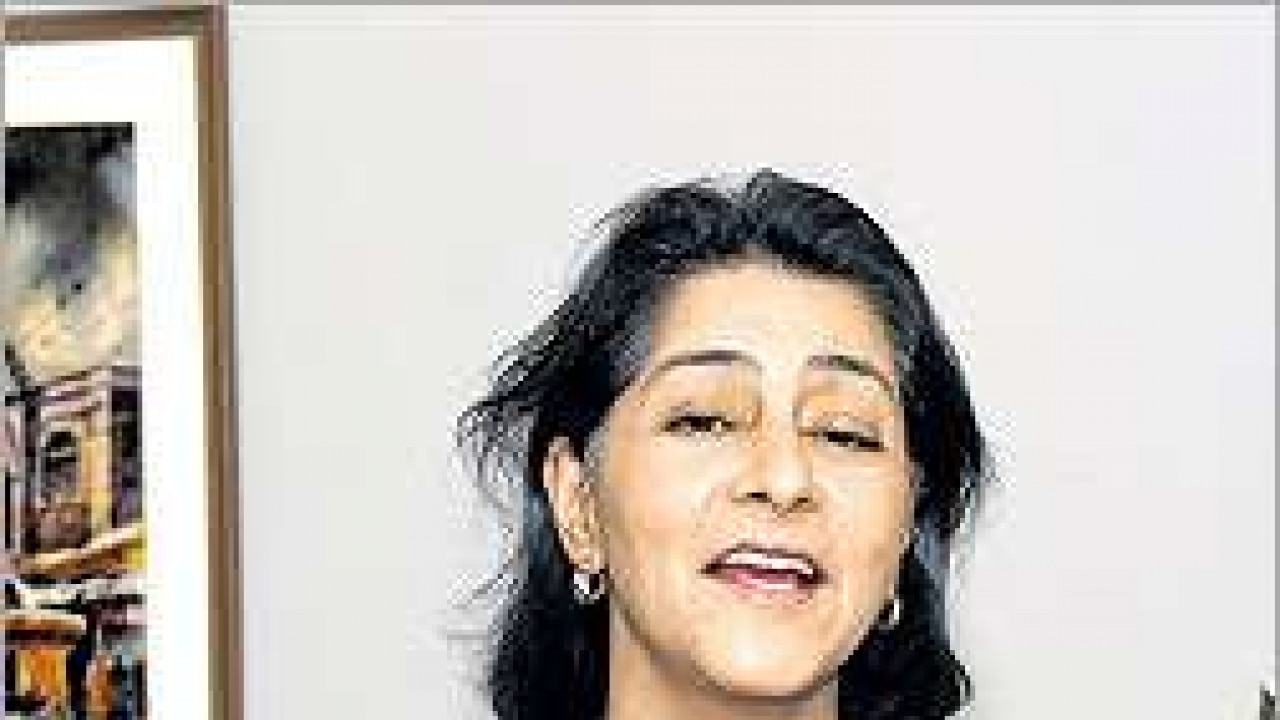
HSBC boss Naina Lal Kidwai talks to Venkatesan Vembu about her life and work, her passions and peeves — and that woman thing.
Power sits lightly on Naina Lal Kidwai’s sari-draped shoulders. HSBC India’s country head, who ranks among Fortune magazine’s recent listing of the world’s 50 most powerful women in business, may walk with the kings of the investment world, but hasn’t lost her endearing common touch. “What is power?” Kidwai asks rhetorically, during a recent interaction in Hong Kong. “To me, power is about making a difference. Each one of us is powerful in what we can do in terms of using our skill sets — whatever they might be — to make a difference.”
Kidwai has certainly made a sterling difference in every sphere of her endeavours, right from the time she prevailed upon her conservative parents to let her study at Harvard Business School, from where she was the first Indian woman to graduate.
“I come from a family where women don’t work, so I had to fight — really fight! — to go to Harvard,” says Kidwai. Her parents had their concerns: her father, for instance, felt she should wait a few more years to decide what she wanted to do, “but I decided I had to go then”. Sometimes, she notes wryly, it helps to have a mind of your own.
It was a time when corporate India didn’t have many role models for careerwomen. So where did she draw her inspiration from? “One person who influenced me was [filmmaker] Mira Nair; we’d been to school together, we were close friends, and she’d gone to Harvard for her undergraduate studies,” says Kidwai. “But there were few other role models, so I looked at every guy around me and asked myself, ‘How am I any less?’ I was smarter and better at studies, so why couldn’t I have what they did?”
Then she adds, a tad philosophically: “I guess the more one is discriminated against, the stronger one becomes. I’ve asked my parents this question: if I had a brother, would I have still been allowed to go to Harvard? I don’t know if I would have, honestly.”
When Kidwai started work at Pricewaterhouse, she was the only woman employee, and they didn’t know what to do with her, literally. “To be fair, I can see where they were coming from,” she says. “If they had to send an audit team out into the boondocks, would they send this single woman with four guys for a month or two? I don’t see this as an issue, but it was obviously a concern for them.” Today, having spectacularly shattered the glass ceiling, Kidwai allows herself to be a lot more charitable. In fact, she says being a woman isn’t a consideration in the workplace anymore, and top-rung careerpersons like her aren’t even conscious of their gender in the boardroom. “I don’t think it’s a gender issue,” she says. “You can have good bosses or bad bosses, and they can be either men or women.”
So what kind of a management style does she abide by? “If I were to talk about the traits that I respect most, it is to always be fair and to respect every person’s point of view — from the most junior to the most senior employee, man or woman,” Kidwai explains. “It is this diversity of ideas and opinions that enriches our decisions.”
Indicatively, under Kidwai’s watch, HSBC India has undertaken an initiative to enhance diversity in the workplace. According to Kidwai, “When I was deputy CEO, I was appointed to head the diversity initiative. We set up task forces across the country — with groups of 10 or 15 people, and with both men and women — who met over three months and came up with ideas on how to make the workplace more diverse.” That effort threw up “wonderful ideas”, says Kidwai — five-day weeks, flexi-hours, sabbaticals, paternity leave, extended maternity leave, after-hours classes on yoga, parenting and even salsa.
One such initiative has enhanced HSBC’s image as a particularly gender-friendly organisation. “We have a very young workforce, and at any given point, we had some young mothers who would not come to work because they were breastfeeding their babies,” she says. “No one had thought of it before, but they needed an additional facility at work. It was just a token — these restrooms aren’t even used a whole lot — but it was a good ‘hygiene factor’. These are among the reasons why HSBC is one of the most preferred employers in India today, apart from the fact that we provide global careers. We’re giving women plenty of space and time.”
Do these ideas get reflected in the gender profile of HSBC’s workforce in India? “I would like to believe so,” says Kidwai. “This year, 40 per cent of those hired at the IIMs were women. When you consider that the pool we were fishing in was only 17-20 per cent female, that’s a pretty good showing.”